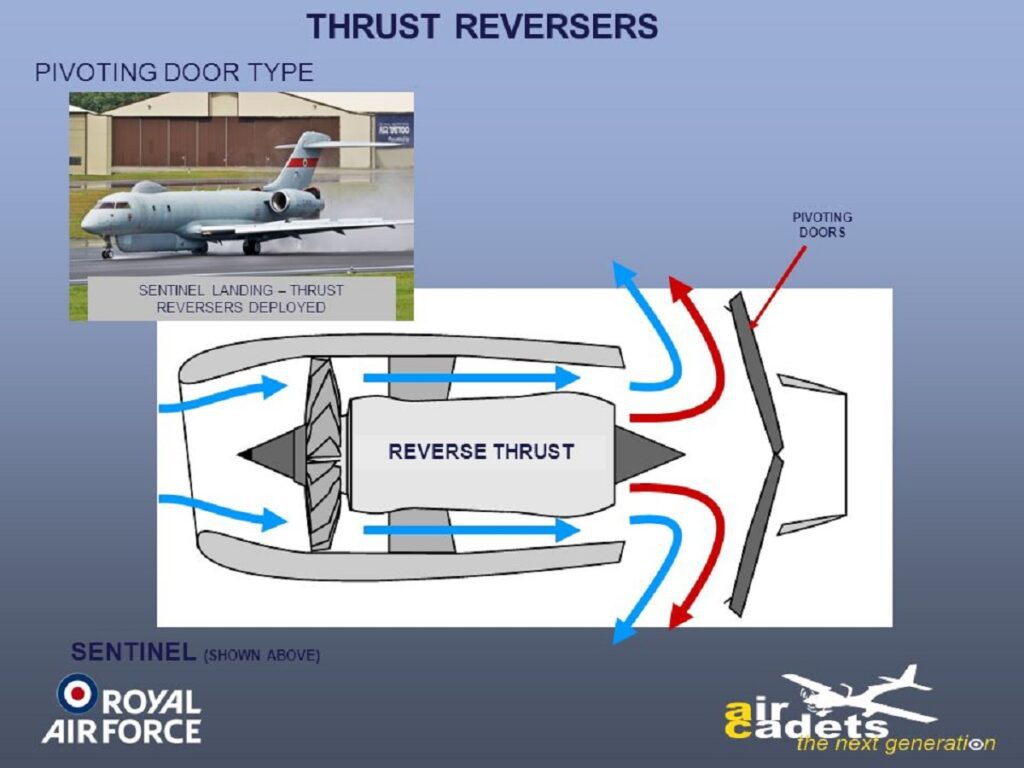
The chances of accidentally deploying reverse thrust while an aircraft is still in the air, just about to land, are extremely low. Modern aircraft are equipped with safety features and mechanisms to prevent such accidental deployment. Pilots are trained to follow strict procedures and to use multiple safeguards to ensure the safe operation of the aircraft, including the deployment of reverse thrust only after the aircraft has safely touched down on the runway. In the rare event of an accidental deployment, pilots are trained to handle the situation and maintain control of the aircraft.
Reverse thrust is a no-no while airborne.
If a thrust reverser somehow becomes deployed during flight it can be one of the most time-critical emergencies imaginable. The reversed engine would oppose the other engine(s) and create a drastically asymmetrical thrust situation. In the case of most large aircraft at a high power setting, the result is very likely to be structural failure of one or more engine mounts or the wing itself. Such a situation occurring unexpectedly would also create an unintended yaw and consequent roll of the airplane making controlled flight unlikely after the event. In other words, the nose of the airplane would skew in the direction of the reversed engine, followed almost immediately with a rapid roll in the same in the same direction.
None of the fighter jets I flew were equipped with reverse thrust. Some of the above may not be applicable to those. In the case of a single engine fighter, there wouldn’t be the asymmetric thrust I’ve described. There certainly would be a massive deceleration. If the pilot wasn’t expecting this and in certain situations, it could be deadly.
You’re probably thinking, “I’m never getting on another airplane now that I know all that!” Rest assured, the possibility is extremely remote. Transport aircraft have automatic safeguards against such an in-flight deployment. For instance most of them require the throttles or engines to be at idle thrust, depending on the specific design. Most also have an interlock with the weight-on-gear (WOG) logic, i.e. the aircraft must sense it is on the ground before allowing pilot deployment of reverse. Also, the thrust reverse controls require a specific set of hand grip and movements to actuate which have no similar counterpart. This tends to negate the possibility of a pilot accidentally selecting reverse thrust while airborne (assuming all the safety interlocks had failed).
Now for the not-so-good news: Despite all the safeguards there is always a tiny possibility of a series of mechanical, electrical and/or human errors. In other words, there is still a finite possibility of an inadvertent deployment of a thrust reverser. And it has actually happened…
On 23 May 1991, Lauda Air Flight NG004, a Boeing 767–300 with 223 crewmembers and passengers, was climbing en route from Bangkok, Thailand to Vienna, Austria when this occurred to them. The resulting accident took the lives of all souls on board. Below is a link to a summary of the accident investigation results:
ASN Aircraft accident Boeing 767-3Z9ER OE-LAV Phu Toey
Despite the extremely serious situation of an inflight reverser deployment, the pilots could have saved the aircraft…IF they had known what to do and done it immediately. Sadly, no one believed such an event to be possible until that day. Boeing Aircraft Company had only thought the situation you described above (accidentally deploying reverse just before landing) to be a risk, but they believed the mechanical and electric safeguards precluded such an event at altitude. Thus the pilots had received no training in how to handle this situation. No one had, anywhere in the world. Afterward, procedures were developed and in-flight manuals changed to cover this possibility in addition to the many known possible malfunctions. The correct response for the Boeing 767 is to immediately shut down the offending engine and fly on the remaining good one to an emergency airfield.
By John Keese ( Former Captain American Airlines)






